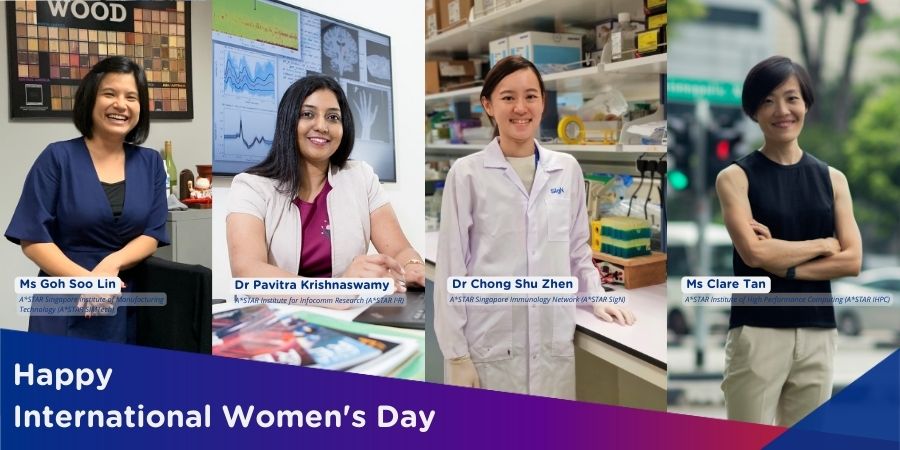Materials Challenges for Quantum Technology Engineering & Innovation webinar series
The 20th century saw the first quantum revolution which created game changing technologies such as transistors and lasers The second quantum revolution, set to define the 21 st century, is well underway.This revolution aims to design, control and engineer individual quantum systems, ranging from molecules to single electrons, with greater precision than ever before. Importantly, quantum information science is no longer limited to interest from university laboratories, but has turned the heads of industry giants and investors alike Think Google and Microsoft, IBM and Alibaba.
What exotic technological applications can we expect from this second quantum revolution? Join us as we embark on a series of webinars to explore the implications of quantum technology engineering and the critical material challenges to overcome Proudly brought to you by A*STAR Institute of Materials Research and Engineering.
Video recording of past webinars
Session 1
18 August 2020
Quantum Effects In Molecularly-Tailored Magnetic Graphene
Prof. Lapo Bogani from the University of Oxford discusses the results from using bottom-up shaping of molecular graphene quantum systems.Session 2
25 August 2020
Infrared Metrology With Visible Light: The Mystic Of Quantum Correlations
In this webinar, Dr. Leonid Krivitskiy from IMRE shares their work on developing new quantum-enabled techniques which allow them to retrieve properties of materials in the IR range from the measurements of visible range photons.Session 3
1 September 2020
Materials Frontiers To Empower Quantum Computing
Hear Prof. Girodano Scappucci from QuTech TU Delft discuss materials challenges that will enable integration of qubits for the quantum information age of tomorrow.Session 4
8 September 2020
Heterogeneous Integration of Surface Ion Trap, Silicon Photonics and 3D-TSV for Quantum Computing
Prof. Tan Chuan Seng from the Nanyang Technological University discusses a scalable multi-module platform integrating SE ion trap, silicon photonics components and 3D through silicon via interconnects using conventional CMOS technologies on 12-inch substrate.Session 5
15 September 2020
Understanding Resonant Charge Transport Through Weakly Coupled Single-Molecule Junctions
Dr. Jan Mol from QMUL introduces a new quantum mechanical description of electron transfer through single molecule devices that show quantitative agreement with experimental data.Session 6
22 September 2020
Ion Trap – A Versatile Device For Quantum Information Processing
Prof. Manas Mukherjee from the Centre of Quantum Technologies at the National University of Singapore provides an overview of their recent contribution, as well as the goals and challenges towards developing scalable quantum processors in ion traps for sensing and simulation applications.Session 7
29 September 2020
Low-Dimensional Quantum Materials For Future Energy Harvesting
Dr. Pascal Gehring from IMEC, Belgium presents their recent progress on experimental thermoelectric studies on single molecules.Session 8
6 October 2020
Atomic and Superconducting Quantum Devices
Hear Prof. Rainer Dumke from Nanyang Technological University discuss the individual challenges of superconducting and atomic quantum systems as well as the current progress to realize robust hybrid computing architectures based on neutral atoms and superconducting qubits.Session 9
13 October 2020
Quantum Coherent Spin-Electric Control in Molecular Nanomagnets
Dr. Junjie Liu from the University of Oxford discusses quantum coherent control spin-electric control in molecular nanomagnets, explained quantitatively by density functional theory and a semi-empirical crystal field model.Session 10
20 October 2020
Contact Engineering of 2D Semiconductors for Quantum Applications
Dr. Aaron Lau from the Institute of Materials Research and Engineering, A*STAR introduces their recent progress on establishing cryogenic contacts in atomic layered transition metal dichalcogenides and discusses quantum transport through these materials.Session 11
27 October 2020
Proximity-Induced Superconductivity in Epitaxial Quantum Spin Hall Heterostructures
In the final session of this webinar series, Prof. Bent Weber from Nanyang Technological University presents their latest work on epitaxially grown van-der-Waals heterostructures of the quantum spin Hall insulator 1T’-WTe2 and the layered van-der-Waals superconductor 2H-NbSe2 which shows stable proximity-induced superconductivity.A*STAR celebrates International Women's Day

From groundbreaking discoveries to cutting-edge research, our researchers are empowering the next generation of female science, technology, engineering and mathematics (STEM) leaders.
Get inspired by our #WomeninSTEM
.png?sfvrsn=b59474e9_3)